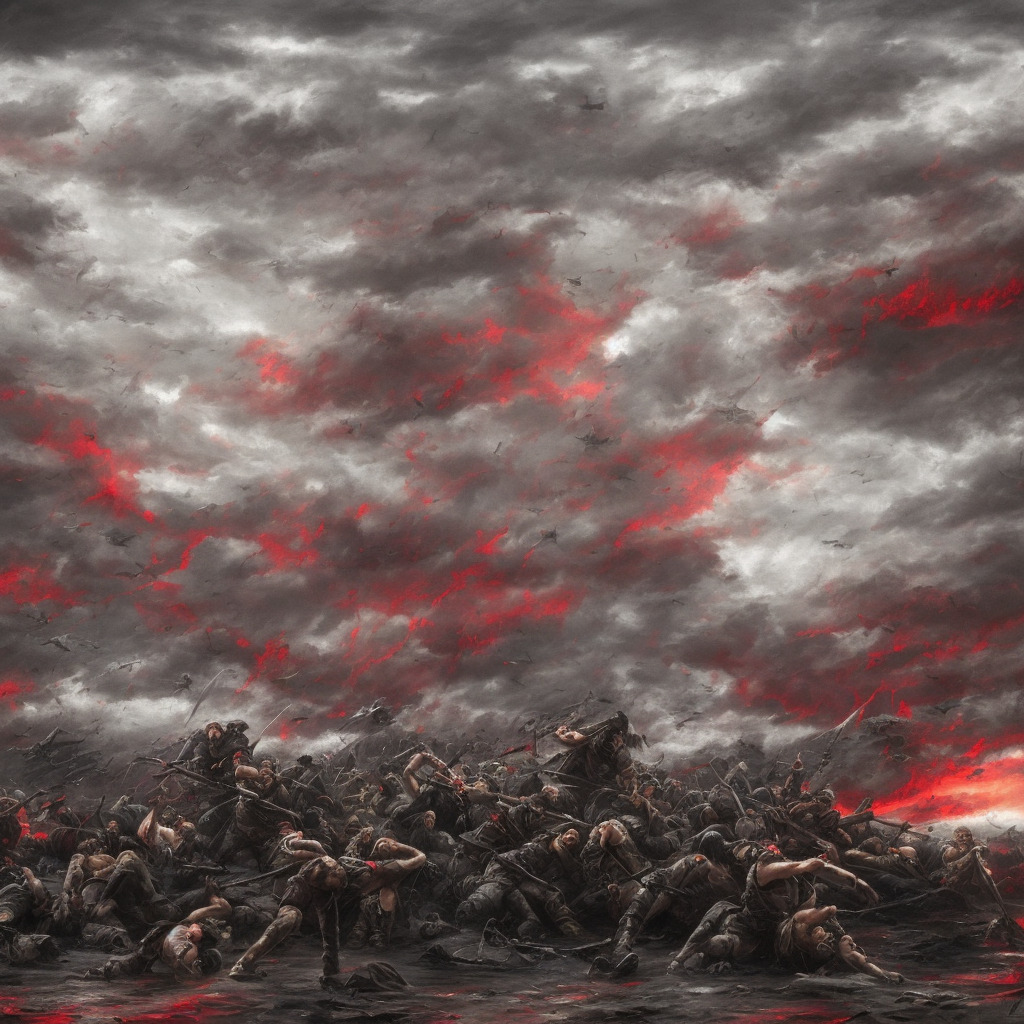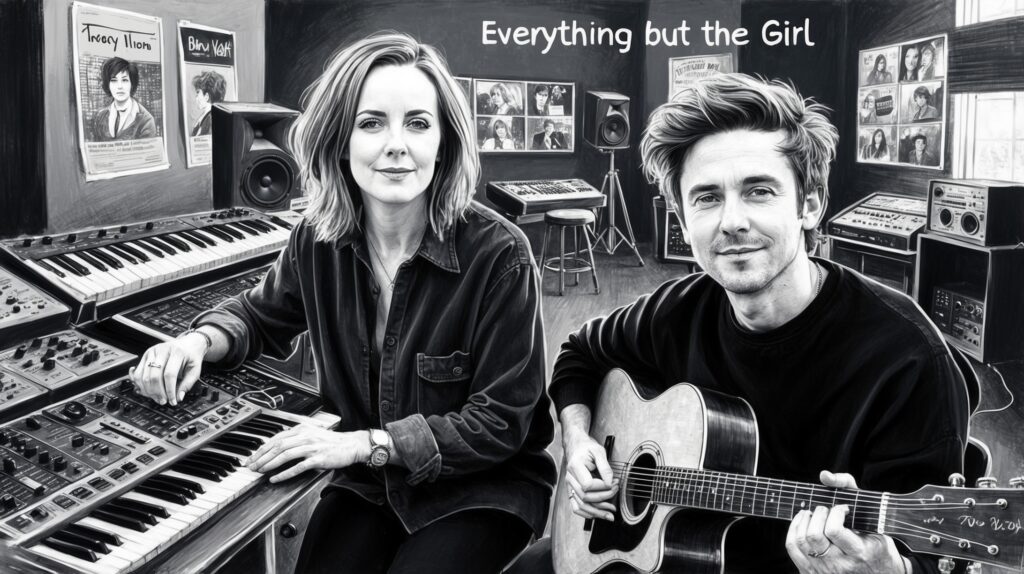Embarking on the journey of “Bohemian Rhapsody” is akin to exploring a magnificent tapestry woven from the very fabric of musical innovation. Queen’s magnum opus, released in 1975, stands as a monumental achievement in the annals of rock history, a track that defies the conventions of genre and structure to present a narrative as compelling and enigmatic as the personalities behind its creation. At the heart of this narrative is the incomparable Freddie Mercury, whose genius orchestrated a song that transcends time and trends, embedding itself in the cultural zeitgeist with an indelible force.
“Bohemian Rhapsody” is not merely a song; it is an odyssey through varied musical landscapes, from the hauntingly beautiful piano introduction to the operatic segment that catapults the listener into a theatrical realm, only to plunge into hard rock and then return, full circle, to its poignant beginning. This song, with its intricate layers and profound emotional resonance, encapsulates the essence of Queen – a band renowned for its eclectic approach and theatrical flair. The song’s enigmatic lyrics and innovative structure invite endless interpretation, adding to its mystique and allure.
As we delve into this analysis, we journey through the heart and soul of “Bohemian Rhapsody,” exploring its musical intricacies, lyrical depth, and cultural impact. This is a song that continues to captivate and inspire, a testament to the enduring power of art to move, to challenge, and to celebrate the complexity of the human experience.
Rock Royalty: The Saga of Queen
Delve into the saga of Queen, a band that redefined the boundaries of rock music with their innovative sound and theatrical performances. From the gritty streets of London to global superstardom, discover how four unique talents came together to create music that continues to resonate with audiences of all ages.
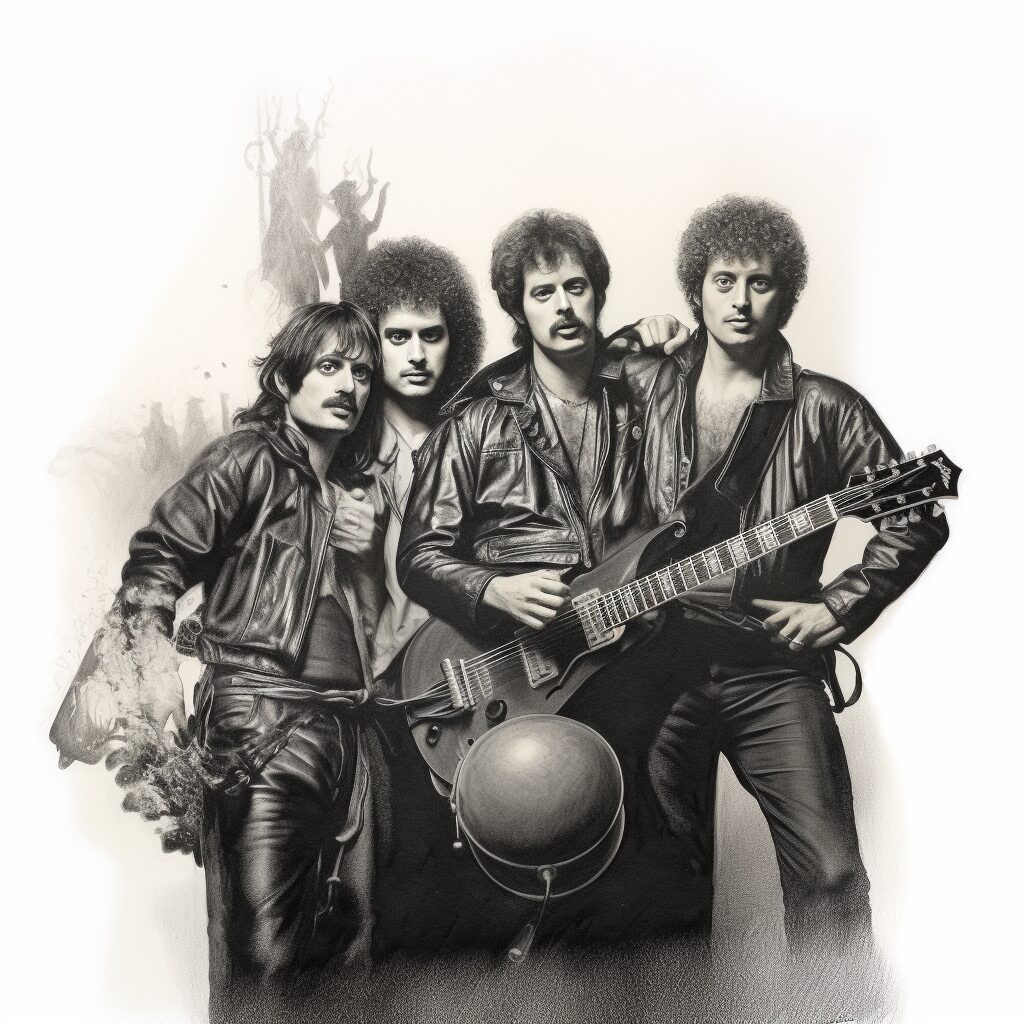 Queen, a band that needs little introduction, stands as one of the most innovative and enduring groups in the history of rock music. Formed in London in 1970, the band consisted of four immensely talented musicians: Freddie Mercury, Brian May, Roger Taylor, and John Deacon. Each brought a unique set of skills and artistic flair, creating a synergy that transcended the sum of its parts.
Queen, a band that needs little introduction, stands as one of the most innovative and enduring groups in the history of rock music. Formed in London in 1970, the band consisted of four immensely talented musicians: Freddie Mercury, Brian May, Roger Taylor, and John Deacon. Each brought a unique set of skills and artistic flair, creating a synergy that transcended the sum of its parts.
From the outset, Queen broke the mold. Their music was a bold fusion of rock, opera, and theater, blending classical influences with a hard rock edge. This unique sound was matched by their theatrical stage presence, particularly that of Freddie Mercury, whose flamboyant performances captivated audiences worldwide. His dynamic vocal range and charismatic persona made him an icon of the rock world.
Queen’s journey to stardom was marked by a series of groundbreaking albums, each showcasing their versatility and willingness to experiment with new sounds. Albums like “Sheer Heart Attack” and “A Night at the Opera” didn’t just contain hit songs; they were cohesive works of art, offering a rich tapestry of musical styles. It was this commitment to innovation and quality that cemented Queen’s place in the annals of music history.
The Crown of Success: Bohemian Rhapsody’s Accolades
Explore the multitude of awards and accolades bestowed upon “Bohemian Rhapsody,” highlighting its enduring impact on music and culture. From chart-topping success to prestigious industry recognitions, this section celebrates the song’s remarkable journey and its legacy as a masterpiece of modern music.
 “Bohemian Rhapsody” is not just a song; it’s a monumental piece of art that has garnered immense critical and commercial acclaim. Since its release, it has firmly established itself as one of the greatest songs in the history of popular music. The song’s unique structure, blending rock, opera, and ballad elements, has earned it widespread admiration and numerous awards.
“Bohemian Rhapsody” is not just a song; it’s a monumental piece of art that has garnered immense critical and commercial acclaim. Since its release, it has firmly established itself as one of the greatest songs in the history of popular music. The song’s unique structure, blending rock, opera, and ballad elements, has earned it widespread admiration and numerous awards.
The song’s impact was immediate and profound. Upon its release, it topped charts around the world, including a record-breaking nine-week run at number one in the UK. It returned to the top of the charts in the UK and other countries following Freddie Mercury’s untimely death in 1991, illustrating its enduring appeal. The song’s re-emergence at the top of the charts decades after its initial release is a testament to its timeless quality and the deep connection it has with listeners.
“Bohemian Rhapsody” has received numerous accolades over the years. It was inducted into the Grammy Hall of Fame in 2004, a recognition reserved for recordings of lasting qualitative or historical significance. In 2012, it topped a poll by ITV in the UK to find “The Nation’s Favorite Number One” over 60 years of music. Rolling Stone magazine ranked it at number 17 on their list of the “500 Greatest Songs of All Time” in 2021, and Mercury’s vocal performance has been lauded as one of the greatest in rock history.
A Visual Extravaganza: The Revolutionary Music Video
Delve into the groundbreaking music video for “Bohemian Rhapsody,” a pioneering work that helped revolutionize the music video industry. From its iconic imagery to its innovative use of visual effects, explore how this video not only complemented the song but became a vital part of Queen’s artistic expression.
 The music video for “Bohemian Rhapsody” is a pioneering piece of art that played a significant role in the evolution of the music video format. Released in 1975, it predates the MTV era and set a new standard for music videos as an art form and promotional tool. The video was directed by Bruce Gowers and shot in just four hours, yet its impact was monumental.
The music video for “Bohemian Rhapsody” is a pioneering piece of art that played a significant role in the evolution of the music video format. Released in 1975, it predates the MTV era and set a new standard for music videos as an art form and promotional tool. The video was directed by Bruce Gowers and shot in just four hours, yet its impact was monumental.
The video is most famous for its iconic opening scene, featuring the band’s faces bathed in shadowy light, inspired by a photograph of actress Marlene Dietrich. This striking visual became one of the most recognizable images in rock history. The use of then-innovative visual effects, like overlaid images and cross-dissolves, added to the video’s allure, making it not just a complement to the song, but an extension of its artistry.
Perhaps the most significant impact of the “Bohemian Rhapsody” music video was its role in demonstrating the potential of music videos to record labels and artists. It showed that music videos could be an effective way to promote a song, leading to the music video revolution of the 1980s. The video’s success also played a crucial role in the song topping the charts, as it was played on UK television in lieu of the band performing live, helping the song to remain at number one for nine weeks.
Conquering the Charts: A Global Phenomenon
Discover the global chart-topping journey of “Bohemian Rhapsody,” a song that transcended geographical boundaries to become an international sensation. From its record-breaking success in the UK to its resurgence in popularity decades later, this section celebrates the song’s remarkable commercial achievements.
 “Bohemian Rhapsody” by Queen is not just a musical masterpiece; it’s also a commercial juggernaut that dominated the charts worldwide. Released in 1975, the song immediately captured the hearts and ears of the public, climbing swiftly to the top of the charts. Its chart success is a testament to its universal appeal and the innovative vision of Queen.
“Bohemian Rhapsody” by Queen is not just a musical masterpiece; it’s also a commercial juggernaut that dominated the charts worldwide. Released in 1975, the song immediately captured the hearts and ears of the public, climbing swiftly to the top of the charts. Its chart success is a testament to its universal appeal and the innovative vision of Queen.
In the United Kingdom, the song was an instant success. It soared to the top of the UK Singles Chart and stayed there for an impressive nine weeks. This initial triumph was just the beginning. After the tragic death of Freddie Mercury in 1991, the song re-entered the charts, topping them again and proving its timeless appeal. This remarkable feat made “Bohemian Rhapsody” one of the few singles to reach number one in the UK twice with the same version.
Internationally, the song’s success was equally astounding. It topped the charts in countries like Canada, Australia, New Zealand, Ireland, and the Netherlands, among others. In the United States, it initially peaked at number nine but surged to a new peak of number two after featuring in the 1992 film “Wayne’s World.” The song’s enduring popularity is further evidenced by its streaming success in the digital era, becoming one of the most streamed songs from the 20th century.
Caught in a landslide, no escape from reality
Open your eyes, look up to the skies and see
I’m just a poor boy, I need no sympathy
Because I’m easy come, easy go, little high, little low
Any way the wind blows doesn’t really matter to me, to me
Mama, just killed a man
Put a gun against his head, pulled my trigger, now he’s dead
Mama, life had just begun
But now I’ve gone and thrown it all away
Mama, ooh, didn’t mean to make you cry
If I’m not back again this time tomorrow
Carry on, carry on as if nothing really matters
Too late, my time has come
Sends shivers down my spine, body’s aching all the time
Goodbye, everybody, I’ve got to go
Gotta leave you all behind and face the truth
Mama, ooh (any way the wind blows)
I don’t wanna die
I sometimes wish I’d never been born at all
I see a little silhouetto of a man
Scaramouche, Scaramouche, will you do the Fandango?
Thunderbolt and lightning, very, very frightening me
(Galileo) Galileo, (Galileo) Galileo, Galileo Figaro, magnifico
But I’m just a poor boy, nobody loves me
He’s just a poor boy from a poor family
Spare him his life from this monstrosity
Easy come, easy go, will you let me go?
Bismillah
No, we will not let you go (let him go)
Bismillah
We will not let you go (let him go)
Bismillah
We will not let you go (let me go)
Will not let you go (let me go)
Never, never, never, never let me go
No, no, no, no, no, no, no
Oh, mamma mia, mamma mia
Mamma mia, let me go
Beelzebub has a devil put aside for me, for me, for me
So you think you can stone me and spit in my eye?
So you think you can love me and leave me to die?
Oh, baby, can’t do this to me, baby
Just gotta get out, just gotta get right outta here
Ooh
Ooh, yeah, ooh, yeah
Nothing really matters, anyone can see
Nothing really matters
Nothing really matters to me
Lyrical Labyrinth: Unraveling Bohemian Rhapsody
Explore the enigmatic and richly layered lyrics of ‘Bohemian Rhapsody,’ delving into the various interpretations and the storytelling prowess of Freddie Mercury. From the existential questions to the operatic references, this section examines how the song’s lyrics contribute to its enduring mystique and appeal.
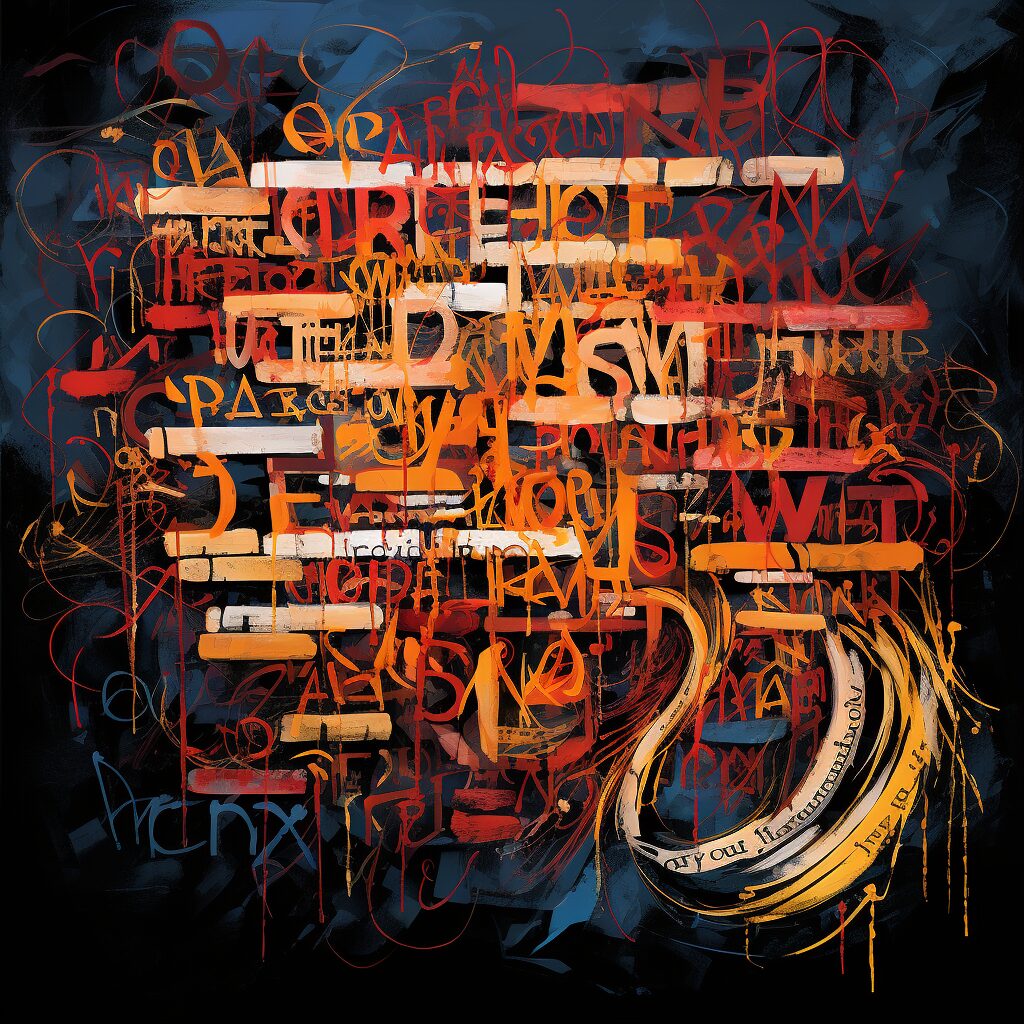 The lyrics of ‘Bohemian Rhapsody’ are a masterclass in storytelling, weaving a tapestry of emotion, drama, and mystery. Written by Freddie Mercury, the song’s lyrics have sparked widespread fascination and debate over their meaning. The enigmatic nature of the lyrics has led to various interpretations, making the song a subject of endless fascination.
The lyrics of ‘Bohemian Rhapsody’ are a masterclass in storytelling, weaving a tapestry of emotion, drama, and mystery. Written by Freddie Mercury, the song’s lyrics have sparked widespread fascination and debate over their meaning. The enigmatic nature of the lyrics has led to various interpretations, making the song a subject of endless fascination.
The opening lines, ‘Is this the real life? Is this just fantasy?’, immediately plunge the listener into a world of existential questioning. The song progresses to tell a story, possibly a confession of a young man to his mother about committing a crime, represented by the famous line, ‘Mama, just killed a man.’ This narrative is interwoven with a range of emotions, from guilt and despair to a sense of defiance and liberation.
The operatic section of the song introduces characters like Scaramouche and Galileo, adding a layer of theatricality and complexity. These references, along with phrases like ‘Bismillah’ and ‘Beelzebub,’ contribute to the song’s rich tapestry of imagery and allusion. Mercury’s brilliance shines through in how these diverse elements come together to form a cohesive, if cryptic, narrative. The lyrics, much like the music, refuse to be pigeonholed, crossing boundaries and defying conventional expectations.
A Symphony in a Song: The Structural Genius
Delve into the structural intricacies of ‘Bohemian Rhapsody,’ a song that breaks away from traditional formats to offer a unique and compelling musical narrative. From the a cappella intro to the hard rock climax, this section explores how each part contributes to the song’s thematic depth and enduring appeal.
 “Bohemian Rhapsody” stands as a testament to Freddie Mercury’s genius in song composition and structure. Unlike typical songs that follow a conventional verse-chorus structure, ‘Bohemian Rhapsody’ defies the norms, presenting a complex, multi-faceted composition that takes the listener on an unparalleled musical journey.
“Bohemian Rhapsody” stands as a testament to Freddie Mercury’s genius in song composition and structure. Unlike typical songs that follow a conventional verse-chorus structure, ‘Bohemian Rhapsody’ defies the norms, presenting a complex, multi-faceted composition that takes the listener on an unparalleled musical journey.
The song begins with an a cappella introduction, setting a dramatic tone. It then transitions into a tender, melancholic ballad section, where the narrative unfolds. The composition shifts gears dramatically with the opera section, a mock-opera interlude featuring elaborate vocal harmonies and theatrical elements. This operatic passage, with its references to figures like Galileo and Scaramouche, adds a layer of grandeur and whimsy to the song.
Following the operatic section, the song moves into a hard rock part, marked by Brian May’s powerful guitar riffs, symbolizing a shift in the song’s emotional tone from introspection to rebellion. The song concludes with a reflective coda, bringing a sense of closure to the narrative while leaving a lingering sense of wonder and awe.
This unconventional structure is not just a showcase of musical dexterity; it’s a narrative device that mirrors the song’s thematic complexity. Each section contributes to the overall story, making ‘Bohemian Rhapsody’ a cohesive piece despite its disparate parts. It’s this ingenious structuring that has contributed to the song’s enduring appeal and status as a masterpiece of modern music.
The Maestro Behind the Masterpiece
Explore the life and legacy of Freddie Mercury, the creative force behind ‘Bohemian Rhapsody.’ From his early life to his rise as a rock icon, this section delves into his diverse musical talents, his unique approach to songwriting, and his lasting impact on the music world and beyond.
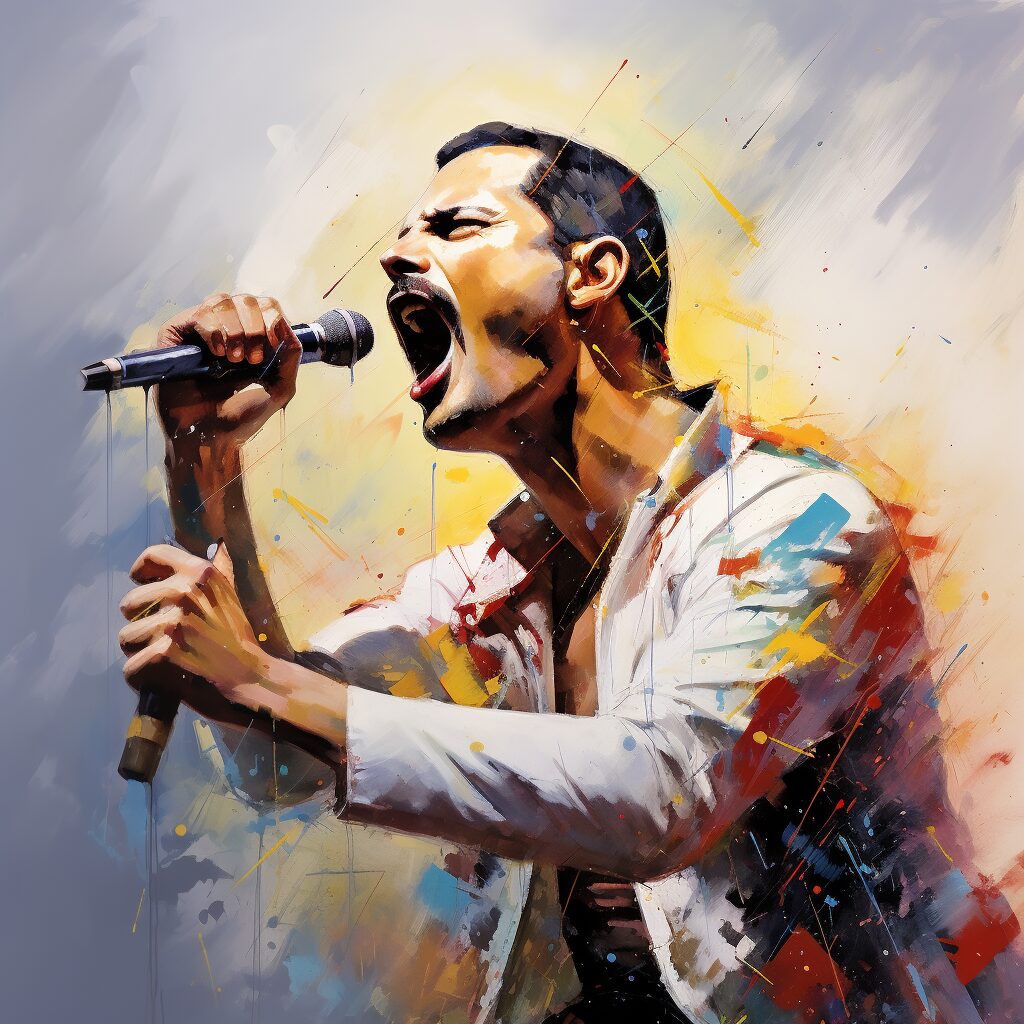 Freddie Mercury, the frontman of Queen and the composer of ‘Bohemian Rhapsody,’ was a figure of immense talent and complexity. Born Farrokh Bulsara in 1946 in Zanzibar, Mercury moved to England in his teens, where he eventually formed Queen in 1970. His flamboyant stage presence and powerful vocals became synonymous with the band’s identity.
Freddie Mercury, the frontman of Queen and the composer of ‘Bohemian Rhapsody,’ was a figure of immense talent and complexity. Born Farrokh Bulsara in 1946 in Zanzibar, Mercury moved to England in his teens, where he eventually formed Queen in 1970. His flamboyant stage presence and powerful vocals became synonymous with the band’s identity.
Mercury’s musical talents were diverse and profound. He was not only an exceptional singer but also a skilled pianist and a gifted songwriter. His compositions for Queen showcased a range of styles, from rock and pop to opera and disco. Mercury’s ability to blend these genres seamlessly was one of his most remarkable qualities, making him a pioneer in music.
‘Bohemian Rhapsody’ stands as perhaps his most monumental work. It reflects his flair for the dramatic and his love for complex, layered compositions. The song was a bold departure from the norms of the time, a personal project that he was intensely passionate about. Mercury’s approach to songwriting was intuitive and non-conformist, often starting with melodies and filling in the lyrics later.
Throughout his career, Mercury pushed the boundaries of what was possible in rock music. His legacy extends beyond his musical genius to his impact as a cultural icon. He challenged norms and lived with a level of flamboyance and freedom that resonated with many. Freddie Mercury remains a beloved figure, and his music continues to inspire and captivate new generations.
An Album Like No Other
Dive into the world of ‘A Night at the Opera,’ the groundbreaking album by Queen that features ‘Bohemian Rhapsody.’ From its innovative production to its eclectic mix of musical styles, this section explores the album’s significance in Queen’s career and its enduring impact on the rock genre.
“A Night at the Opera,” the album that houses ‘Bohemian Rhapsody,’ is a landmark in Queen’s discography and in the history of rock music. Released in 1975, the album was a critical and commercial success, showcasing the band’s eclectic style and innovative approach to music production.
The album’s title, inspired by the Marx Brothers’ film of the same name, reflects Queen’s blend of drama, humor, and grandeur. It was Queen’s most expensive album to produce at the time, but this investment paid off, resulting in a rich, meticulously crafted sound. The album features a diverse range of musical styles, from the hard rock of ‘Death on Two Legs’ and ‘I’m in Love with My Car’ to the folk-inspired ‘’39’ and the vaudevillian ‘Lazing on a Sunday Afternoon.’
‘A Night at the Opera’ was a pivotal moment for Queen, cementing their status as one of the most innovative and versatile bands in rock. The album’s experimental nature, combined with its technical proficiency, set new standards for what could be achieved in a rock album. It also marked a turning point in the band’s career, propelling them to international stardom.
The album is remembered not only for its musical achievements but also for its cultural impact. It challenged the norms of rock music, both in its eclectic composition and in its lavish production. ‘A Night at the Opera’ remains a testament to Queen’s ambition and creativity, a daring and triumphant work that continues to influence musicians and music lovers alike.
A Timeless Masterpiece: The Enduring Legacy of Bohemian Rhapsody
Reflect on the enduring legacy of ‘Bohemian Rhapsody,’ a song that transcends the confines of its genre to become a timeless masterpiece. This section celebrates its ongoing impact on music and culture, acknowledging its place as a defining piece of art in music history.
“Bohemian Rhapsody” by Queen, more than four decades after its release, continues to stand as a monumental achievement in music history. Its blend of lyrical depth, musical complexity, and emotional resonance has not only defined a genre but also transcended it. The song remains a cultural touchstone, appealing to diverse audiences across generations and geographies.
The legacy of ‘Bohemian Rhapsody’ extends beyond its innovative structure and lyrical ingenuity. It encapsulates a moment in music history where boundaries were pushed, and new territories in sound and storytelling were explored. The song’s enduring popularity is a testament to its ability to connect with listeners on a deeply personal level, offering new insights and experiences with each listen.
As we reflect on the impact of ‘Bohemian Rhapsody,’ it’s clear that its influence goes beyond the realm of rock music. It is a piece of art that continues to inspire and challenge artists across all genres. The song’s journey from a bold idea in Freddie Mercury’s mind to a chart-topping hit, and now a timeless classic, is a reminder of the power of creativity and the enduring appeal of great music.
In the end, ‘Bohemian Rhapsody’ is not just a song; it is an experience, an emotion, and a part of our collective cultural heritage. Its place in the annals of music history is secure, and its legacy will continue to inspire for generations to come.
Unravel the rich tapestry of Queen’s iconic masterpiece, Bohemian Rhapsody. Join us on a captivating journey through its history, lyrics, and enduring legacy. Prepare to be enthralled by the story behind the song that redefined rock music. #Queen #BohemianRhapsody #MusicHistory



